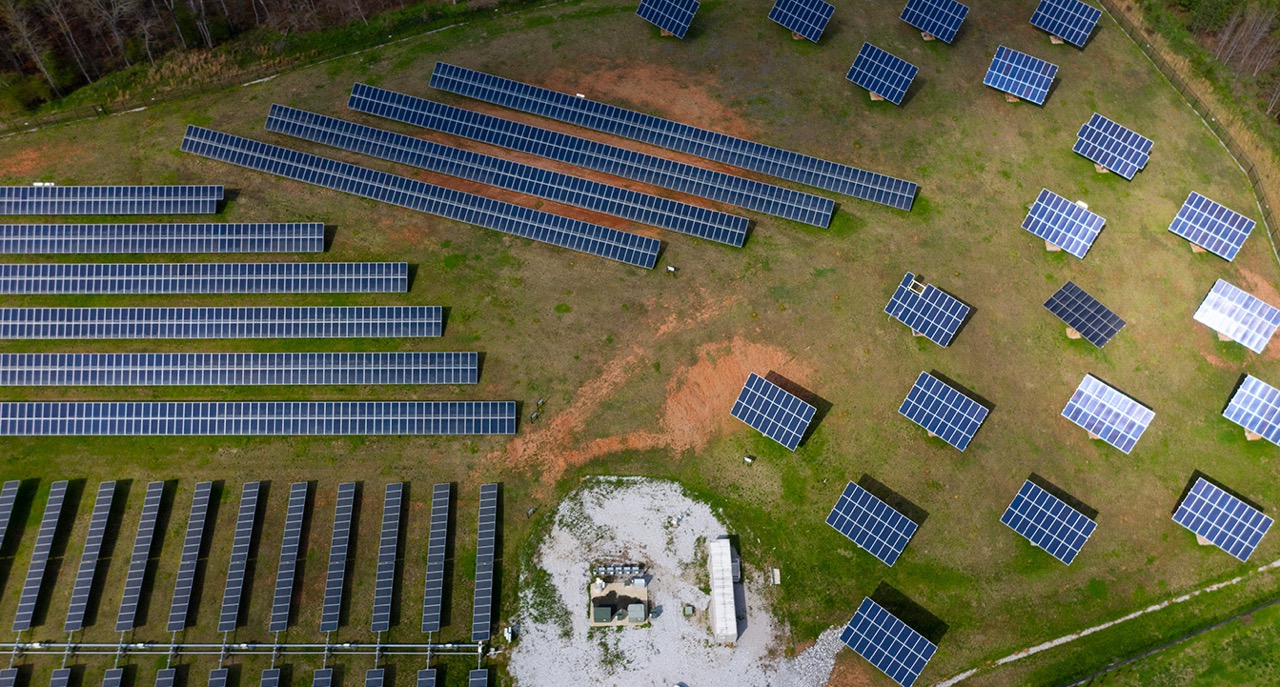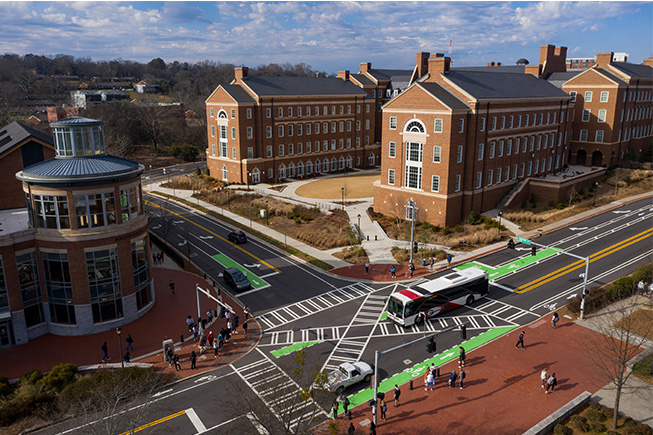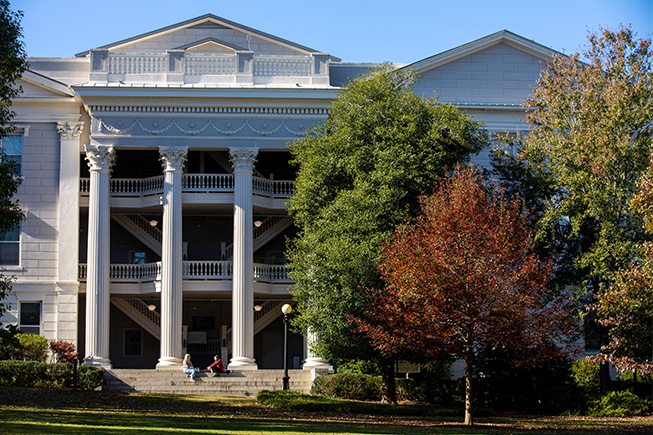Many Georgia communities have distinctive natural surroundings such as mountains, beaches, rivers, lakes, and fertile farmland. These communities often identify with these natural resources as residents and visitors come to associate them with geographical features found throughout the state. In addition, Georgia communities have unique cultures that set them apart and contribute to local identities. In many cases, the natural and cultural environments that characterize Georgia communities give rise to additional resources consisting of assets associated with local economies and unique infrastructure plans. These combined resources result in built-financial capital, which provides communities with unique opportunities to access a broad range of resources and invest in economic and community development.

Built-financial capital determines the financial and physical resources that can be utilized to benefit residents and facilitate growth. Prominent examples of built-financial capital include transportation infrastructure and water treatment facilities, financial services provided by banks and other institutions, and employment opportunities. In addition, some essential services can be categorized as built-financial capital. These include public safety services such as police and fire departments, schools, hospitals, infrastructure intended to improve communications, and public and private buildings (as well as other physical features) that enhance a community’s built environment and foster a shared identity among residents.

What is Built-Financial Capital?
Built-financial capital refers to the constructed environment (or infrastructure) and economic resources needed to support community activities and sustain successful community development. While infrastructure and financial assets often are viewed as separate indicators of community wealth, they are very closely linked and can be considered one form of community capital. Manufacturing physical structures and other built features of a community requires a considerable financial investment, while local infrastructure such as communication systems (broadband and cellular services, for example) and transportation solutions (such as roads, bridges, and public transit options) is necessary to facilitate economic transactions and promote commerce.
Built-financial capital is one of the most recognizable forms of community capital, primarily because of the conspicuous nature of existing infrastructure and new construction, and because these and other financial resources are consistently expressed in easily measured economic terms. For example, information concerning community budget figures such as local revenue and expenditures is available to the public. As a result, any interested individual can determine the financial status of their community and make meaningful comparisons to similar communities.
Using the CD+SI ToolkitTM to Measure Community Perceptions of Built-Financial Capital
Individuals often form perceptions of communities based on their built environments. A collection of tall buildings and busy highways, for instance, would indicate a larger community serving as a hub of activity for the surrounding area. Poorly maintained roads, a cluster of built structures in disrepair, or a noticeable lack of business activity might suggest that a community is in economic distress. Perceptions of a community’s built-financial capital are often influenced by these types of visual indicators. The challenge for communities and their leadership is to determine residents’ perceptions and evaluate that information in order to make informed decisions about potential economic and community development policies and programs.


The Community Diagnostics + Social Impact (CD+SI) ToolkitTM provides a quantitative set of measures to assess residents’ perceptions of local infrastructure and available financial resources. Determining these impressions can offer valuable insights into local efforts to recruit and retain businesses, what local services can be provided to accommodate physical and economic growth, and what elements should be included in a broad community and economic development plan. The CD+SI ToolkitTM focuses on whether residents perceive their community as (1) having a diverse range of employers, (2) maintaining a stable level of employment, (3) pursuing new businesses, (4) engaging in efforts to attract investments from charitable organizations, (5) facilitating access to transportation and communication services, and (6) promoting a vision for the future. General perceptions are established by determining the overall level of agreement with a collection of statements characterizing each of these built-financial components. The CD+SI ToolkitTM provides community members with an opportunity to quantitatively evaluate their built environment and economic future, while potentially serving to inform community leaders’ decision making and policy preferences related to community and economic development. By systematically determining community perceptions, communities can diagnose potential concerns and identify specific entry points for constructive dialogue.
Built-financial capital represents much of the infrastructure necessary for a community to grow and develop. Considering the infrastructure, as well as the financial resources, within a community may provide an important perspective regarding needs as well as opportunities.
References
Chandra, A., & Thompson, E. (2000). Does public infrastructure affect economic activity? Evidence from the rural interstate highway system. Regional Science and Urban Economics, 30(4), 457–490. https://doi.org/10.1016/S0166-0462(00)00040-5
Crowe, J. A. (2008). Economic development in the nonmetropolitan West: The influence of built, natural, and social capital. Community Development, 39(4), 51–70. https://doi.org/10.1080/15575330809489658
Emery, M., Fey, S., & Flora, C. B. (2006). Using community capitals to develop assets for positive community change. CD Practice, 13, 1–19. https://doi.org/10.1080/15575330609490152
Emery, M., Fey, S., & Flora, C. B. (2006). Using community capitals to develop assets for positive community change. CD Practice, 13, 1–19. https://doi.org/10.1080/15575330609490152
Emery, M., Gutierrez-Montes, I., & Fernandez-Baca, E. (2013). Sustainable rural development: Sustainable livelihoods and the community capitals framework. Routledge.
Fey, S., Bregendahl, C., & Flora, C. B. (2006). The measurement of community capitals through research. Online Journal of Rural Research & Policy, 1(1), 329–346. https://doi.org/10.4148/ojrrp.v1i1.29
Kandilov, I. T., & Renkow, M. (2010). Infrastructure investment and rural economic development: An evaluation of USDA’s broadband loan program. Growth and Change, 41(2), 165–191. https://doi.org/10.1111/j.1468-2257.2010.00524.x
Pigg, K., Gasteyer, S. P., Martin, K. E., Keating, K., & Apaliyah, G. P. (2013). The community capitals framework: An empirical examination of internal relationships. Community Development, 44(4), 492–502. https://doi.org/10.1080/15575330.2013.814698
Tolbert, C. M., Mencken, F. C., Riggs, T. L., & Li, J. (2014). Restructuring of the financial industry: The disappearance of locally owned traditional financial services in rural America. Rural Sociology, 79(3), 355–379. https://doi.org/10.1111/ruso.12037
Status and Revision History
Published on Jan 14, 2022
